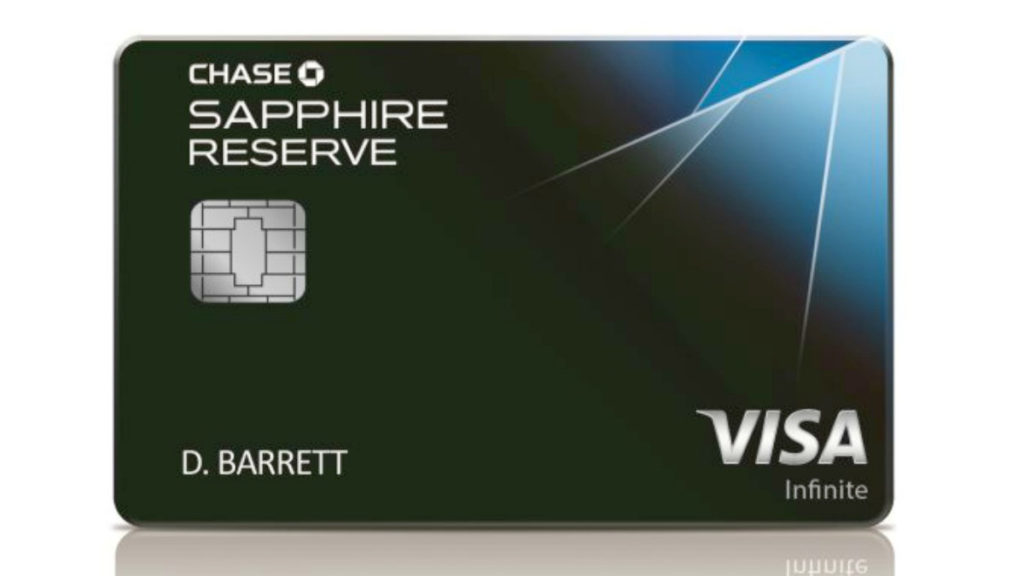Last Updated on June 19, 2025 by Kristin

When it comes to paying for your rental car, not all credit cards are created equal. Choosing the right credit card is an important decision, since coverage can vary widely. A premium credit card like the Chase Sapphire Reserve Card has built-in benefits for travelers.
Few credit cards have generated buzz among travelers like the Chase Sapphire Reserve Card. Many experts say it is the one they’d most like to have in their own wallet. Here’s why.
Chase Sapphire Reserve Card Benefits for Car Rentals
Note: AutoSlash may receive compensation on purchases made from chosen links.
Primary coverage for rental cars
The single most valuable benefit a credit card can bring is primary coverage for car rental insurance. Most credit cards offer secondary coverage, meaning that it kicks in only after your personal auto insurance coverage is depleted. The beauty of primary coverage is that if you damage your rental car, you won’t have to file a claim with your auto insurance. That means the credit card resolves the issue without your auto insurance company and there’s zero chance that your premium will go up.
Buy Collision Insurance For Less Than What You’ll Pay at the Rental Counter
Chase Sapphire Reserve offers primary coverage for damages of up to $75,000, while most credit card coverage limits coverage to vehicles with a retail value under $50,000. This card covers passenger vans (eight or fewer people) as well as “selected models” of BMW, Mercedes-Benz, Cadillac and Lincoln cars. Reimbursement applies to “most rental vehicles” under contracts that do not exceed 31 days.
To take advantage of this benefit, you must:
- Decline the rental company’s collision damage waiver (CDW/LDW).
- Be the primary renter of the car.
- Pay for the car in full with your Chase Sapphire Reserve card.
- Rent for a period of less than 31 days.
Rental privileges at car rental companies
The Chase Sapphire Reserve Card offers special perks, including discounts and promotions, when you rent with certain companies, including National Car Rental and Avis.
Lots of ways to earn points fast
With the Chase Sapphire Reserve Card, you earn eight points for every dollar you spend on rental cars; four points for every dollar you spend on bookings through the airline; four points per dollar on hotel bookings; 10 points for every dollar on Chase Dining; three points per dollar on all other dining; and one point for every dollar you spend on everything else related to travel. The signup bonus is 50,000 points when you spend $4,000 on purchases in the first three months—that’s worth up to $750 toward travel when you redeem through Chase Ultimate Rewards.
Ask AutoSlash for a Quote on a Cheap Car Rental
Other travel perks
Other perks of significant value include up to $500 in credit for The Edit (Chase’s high-end hotel portal) and up to $300 in credit at restaurants in the Sapphire Reserve Exclusive Tables program. Cardholders get up to $300 in statement credit for StubHub; up to $250 toward Apple TV+ and Apple Music subscriptions; up to $120 in credit toward Peloton membership; up to $25 monthly for DoorDash; $10 a month for Lyft rides; and complimentary IHG One Rewards Platinum Elite Status through Dec. 31, 2027.
There’s also a $300 annual travel statement credit, which reimburses you for travel-related purchases at the end of the year. And the card’s travel protections remain intact. In addition, you get a $120 application fee credit for Global Entry or TSA Precheck or NEXUS.
The Chase Sapphire Reserve Card also unlocks a host of hotel upgrades, free airport lounge access through Priority Pass and lost-luggage reimbursement—all cushy perks that make you feel like a VIP when you travel.
How to Redeem Points Earned With a Chase Sapphire Reserve Card
Under a new redemption program called “Points Boost,” cardholders can redeem their points at a value of 2 cents apiece on select flights and hotel stays. Bookings that qualify for Points Boost are identified in the portal. For bookings not eligible for Points Boost, the redemption value will be just 1 cent per point.
How to Apply for a Chase Sapphire Reserve Card
The Chase Sapphire Reserve Card is a premium card with a fairly high barrier to entry. As of June 23, 2025, the annual fee jumped $795 and the APR can be as high as 24.99%, depending on your credit history. The cash advance APR is 26.99 percent. There is no foreign transaction fee, which also boosts the value of travel-related points you redeem by 50 percent.
Let AutoSlash Track Your Car Rental for Price Drops
The personal finance site Nerdwallet has a handy checklist to figure out whether the Chase Sapphire Reserve Card makes sense for you.
You can learn how to apply for the card here.
How to File a Rental Car Claim with Chase Sapphire Reserve
If your rental car gets damaged or stolen, filing a claim is pretty straightforward. It’s key to keep in mind a few deadlines. You can get the process started by calling the number on the back of your card.
- 60 days or less: Chase suggests notifying the benefit administrator immediately about any incidents, and that this should be done no more than 60 days after the issue arises.
- 100 days or less: Chase will then send a claim form that needs to be returned within 100 days of the accident or theft.
- Within a year: Any additional documentation must be sent to Chase within 365 days.
Related:



